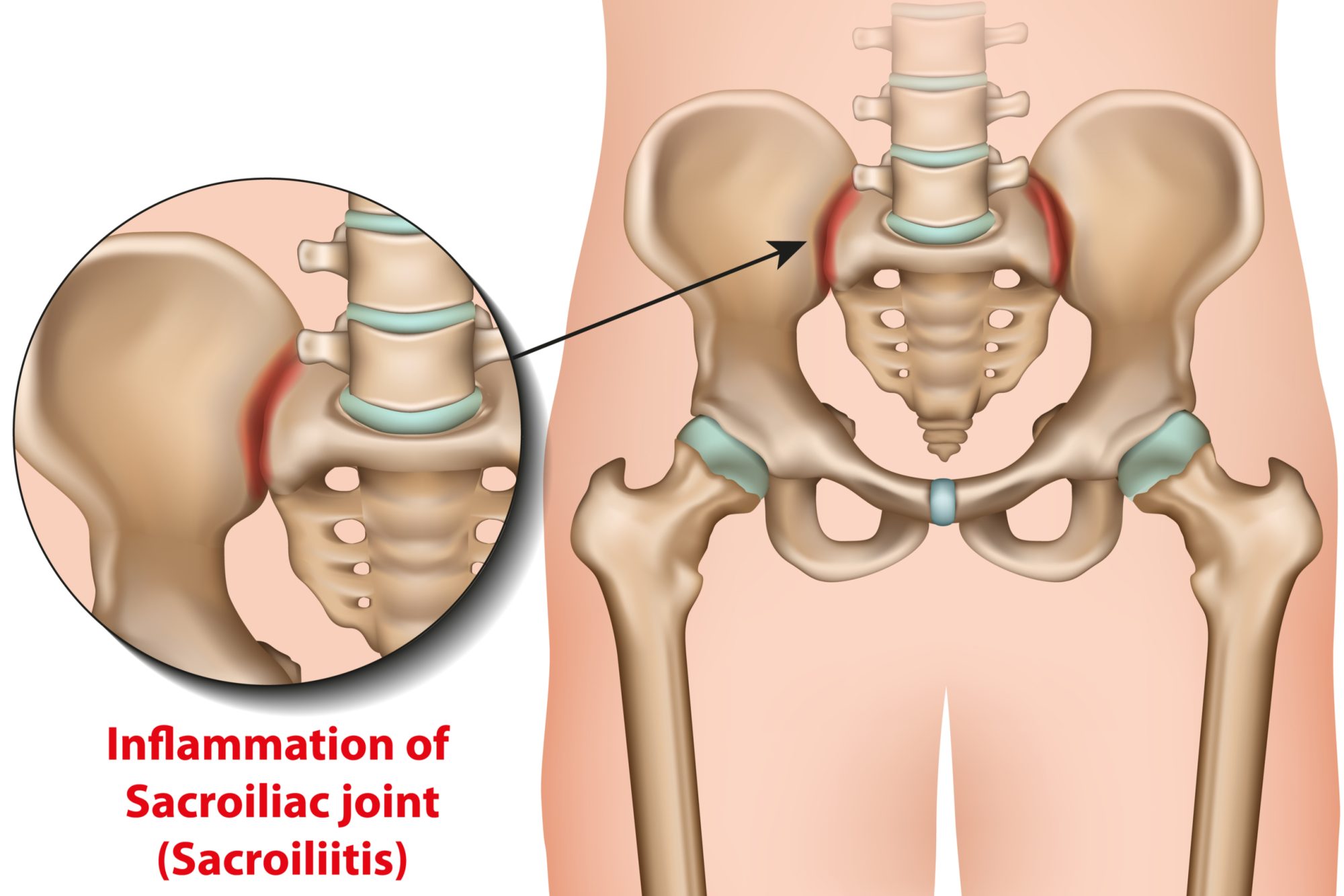
Sacroiliac Joint Disorder
If getting up from a chair or climbing a flight of stairs causes pain in your lower back or buttocks your sacroiliac (SI) joints may be the culprit. According to research the SI joint is the primary cause of pain in 15 to 30% of individuals with chronic low back pain.
Overview
The SI joints distribute your body's weight across the pelvis. They act as a shock absorber reducing the amount of stress that movement places on your spine. The bones in the joints are irregular and fit in like a piece of art.. The bones are all linked together by muscles and extra-strong ligaments which add stability and allow for a restricted range of motion. Though minor this movement is required for staying upright and even giving birth. The joint bones are lined with cartilage for protection. Fluid fills the spaces between the bones in the SI joints providing lubrication. These areas are densely packed with open nerve endings that send pain signals to the brain. It can be painful when the bones in the SI joint are in improper alignment or when the cartilage wears away causing the bones to rub together.
Causes
Plenty of individuals experience pain that aggravates over time; however, SI joint pain can be linked most often to an injury more than half of the time. It is difficult to attribute any single specific functional difficulty (such as walking sitting standing sleeping on the affected side job activity bowel movements coughing sneezing and so on) to the SI joint as a source of pain. Other contributing factors include:
• Injury to Lumbar Spine or Hip
• Lumbar Fusion
• Age-related degeneration
• Pregnancy/Childbirth
• Inflammatory joint disease like sacroiliitis
Symptoms
Pain is frequently felt in the buttocks with discomfort radiating into the thigh or groin but it might also be felt in the low back. SI joint disorders are characterized by the following symptoms:
• Pain and discomfort in the lower back
• Lower-extremity pain numbness tingling and weakness
• Buttock/pelvic pain
• Hip/groin discomfort
• Leg instability (buckling giving way)
• Sleep disturbances caused by pain
• Sitting patterns that are disrupted (inability to sit for long periods sitting on one side)
• Rising from a sitting posture is excruciatingly painful.
• Difficulty in climbing stairs.
Ayurvedic View
Kati graha -The condition in which kati means spine of lumbo sacral region and graha means stiffness is present, this is sacroiliac joint disorder. Aggravated vata dosha takes sthana (settles) in kati pradesha does dushti (vitiation) of asthi vaha srotas (bone and nearby bone supporting structures), which results in pain ,radiating pain, stiffness and impaired fuction of spine, this is sacroiliac joint disorder. Ayurveda way of approach is to bring dosha back to prakruta awastha (balance state), reduce the pain and rehabilitate the affected part by ayurvedic panchakarma treatment.
Ayurvedic Treatments
Churna pinda swedanama Lepanam Pichhu Vasti Bandanam Patra pinda swedanam Virechanam Pinda swedanam Nadi swedanam Kashaya dhara Pizichal Upanaham
Naturopathy Treatments
Spinal Bath Spinal spray Enema Manipulative therapy Steam bath Mud therapy Packs Reflexology Acupuncture Hijama therapy Moxibustion Physiotherapy Electrotherapy Exercise therapy Dorn therapy
Sacroiliac Joint Disorder
Treatment for
DISCLAIMER: Listed treatment details are only for information purposes. Treatments and duration may vary depending on numerous factors. Treatments for your condition may not be limited to this list.






















